Over the years, the 1911 Beaux-Arts main branch of the New York Public Library (NYPL), now officially named the Stephen A. Schwarzman Building, by Carrère & Hastings has morphed and been modified internally to accommodate changing user needs and logistical demands. But changes can involve missteps. So it comes as a relief that for the most recent phase of this landmark’s ongoing renovation, the Dutch firm Mecanoo, as design architect, and Beyer Blinder Belle (BBB) as the preservation architect, have carried out sensitive exterior and interior interventions that enhance its circulation and accommodate expanded programmatic requirements.
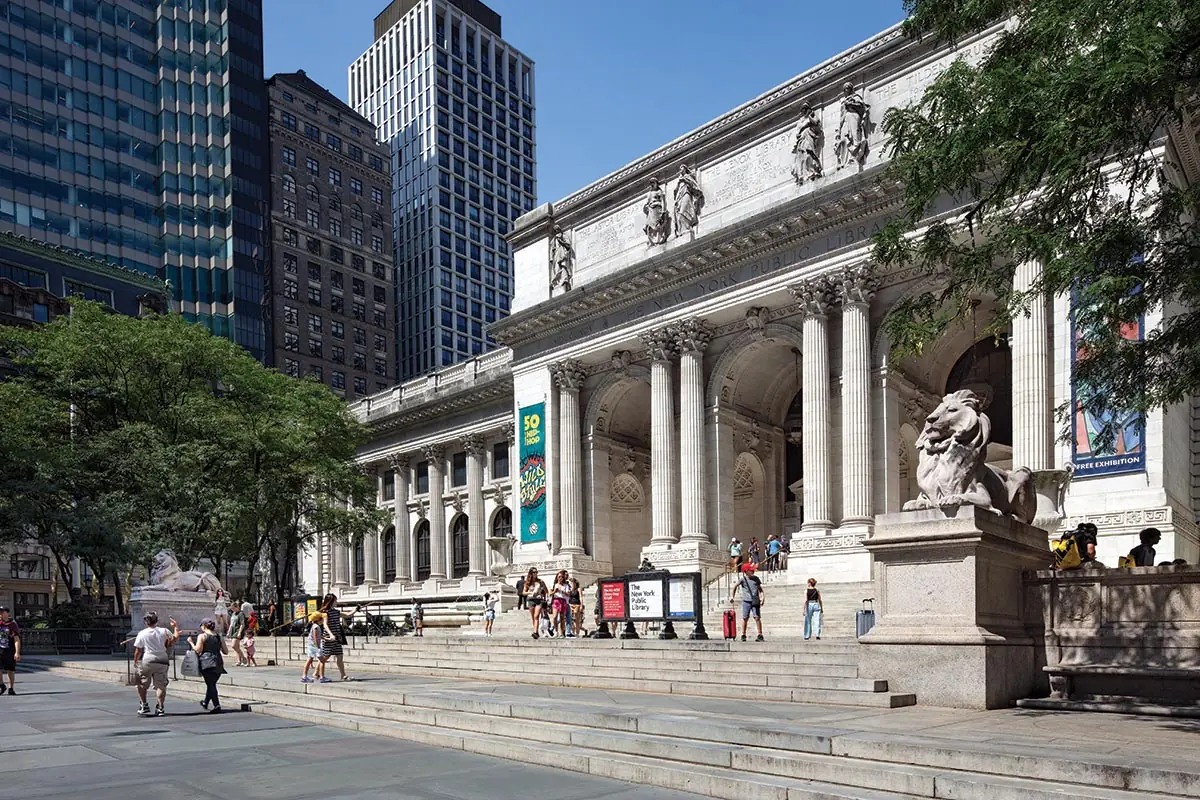
1
The architects created a new entry plaza (top of page) and reception desk (2) for the existing Carrére & Hastings building (1). Photo © John Bartelstone, click to enlarge.
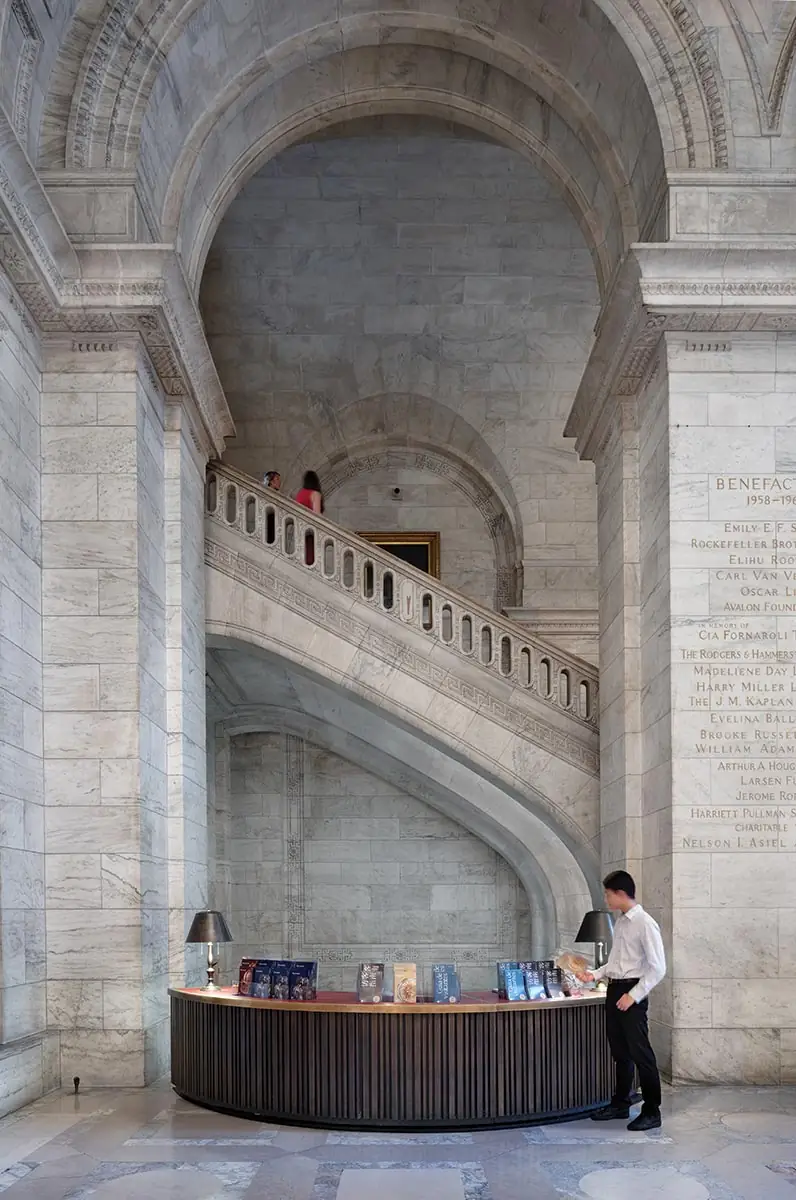
2
While previous work by Davis Brody Bond improved the building’s functionality—most notably, the insertion of a glazed structure within one of its two inner courtyards (2002) for classrooms, offices, and an auditorium, and the creation of a technologically advanced stack extension beneath Bryant Park (1991)—not all schemes have been promising. A controversial plan by Foster + Partners in 2012, to remove the original steel-and-cast-iron stacks that occupy seven stories of the building’s core for a new circulating library, brought about a public outcry. The NYPL scrapped that scheme in 2014, ultimately replacing it with the master plan by Mecanoo and BBB, which embraced a broader strategy that would include the renovation of a dreary library across Fifth Avenue at 40th Street.
Completed in 2021, that dramatic transformation, resulting in the Stavros Niarchos Foundation Library, met with acclaim and functions both as a lending and business library. The Stephen A. Schwarzman Building would then continue its long-standing role as the NYPL’s main branch and research facility, with no books leaving the premises. However, there were still shortcomings at the Carrère & Hastings edifice to address.
In spite of the Davis Brody Bond insertions and its spectacular restoration of the Rose Main Reading Room on the third floor in 1998 (which was followed by another in 2016), there was still much to do. The entire building lacked an organizational focus. “It was chaos,” says Francine Houben, Mecanoo’s partner in charge, adding, “We wanted to listen to the logic of the Beaux-Arts building.” Over the years, spaces conceived for public use had been usurped for staff, mechanical equipment, or storage. And, though this NYPL flagship has maintained its program as a resource for scholars and students, there were always tourists—millions each year, of late, who walk through its halls just to take in the majestic spaces and gallery exhibitions.
According to Elizabeth Leber, BBB partner in charge, a large part of the renovation—much of it surgical and behind the scenes—is about the materials, a durable and classic palette of stone, terrazzo, bronze, and wood. The key factor, however, is flow. To improve it, the architects first installed a side entrance on 40th Street, where there was none, replacing a mechanical enclosure with a plaza that leads to Fifth Avenue, and sourcing the same Vermont marble found in the original building for cladding around new bronze doors that seem to have always been there. “We were very careful, conferring with the Landmarks Preservation Commission about how to integrate these details,” says Leber.
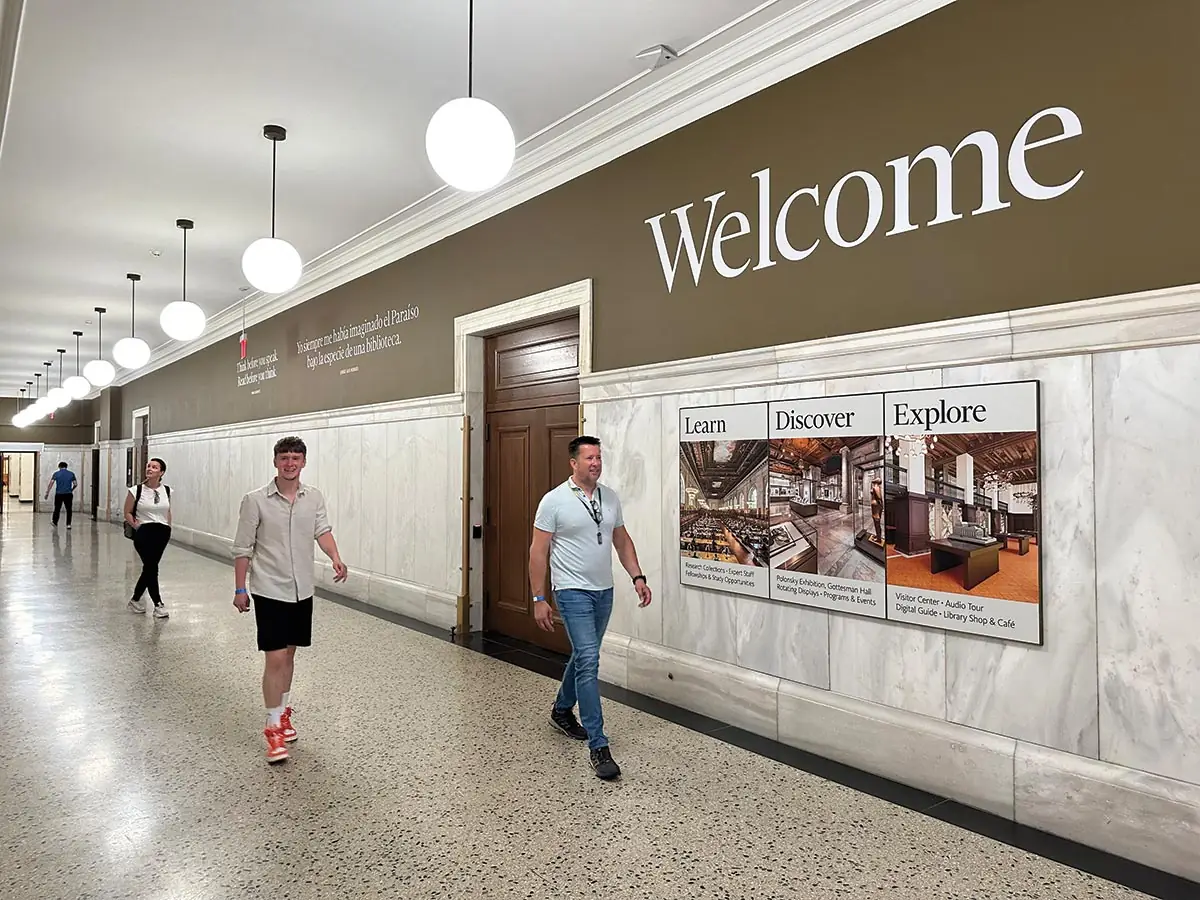
3
White vermont marble and terrazzo visually link the existing ground-floor corridor (3) with a new stair-and-elevator core (4). Photo © Mecanoo
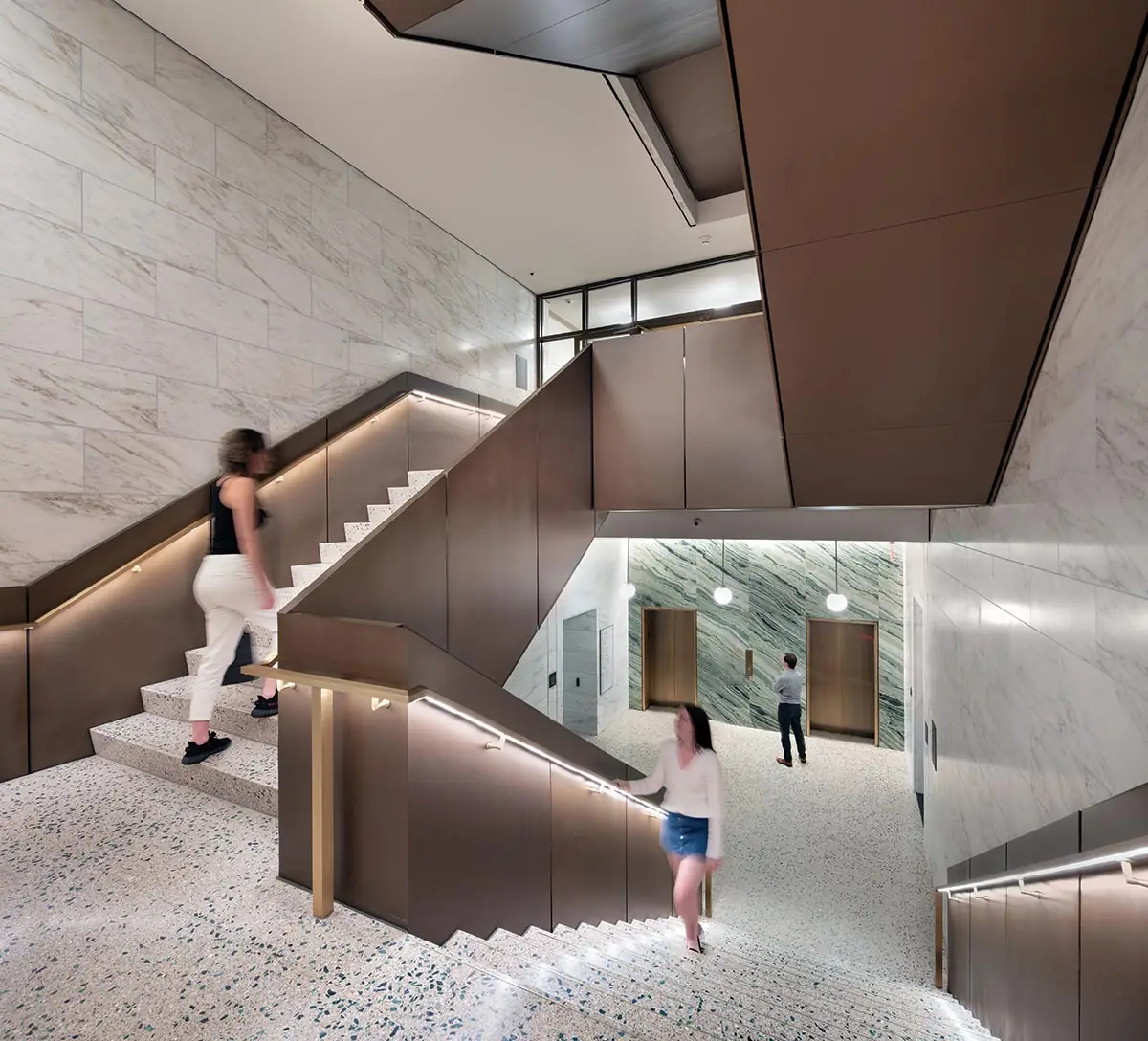
4
The addition of this south portal was largely created for group visits and to offer an elegantly accessible alternative to the dramatic climb up the building’s famous Fifth Avenue staircase. To integrate the new entrance with the interior, the design team carved a small lobby, where an office had been, carrying the Vermont marble through to an existing corridor clad in that stone. They also replaced a shabby quarry tile floor with terrazzo, recreated existing wood doors with fire-rated versions (replicating the worn hardware), and upgraded fluorescent lighting with historically sympathetic LED fixtures.
For the project’s most dramatic move, Mecanoo and BBB inserted a strikingly contemporary stair-and-elevator core at this end, one that rises from the street level to the top floor. Adjacent to it is a small additional core, leading down to the lower-level auditorium. Both elements rely on terrazzo, marble, and bronze to connect the new with the old.
As significant as these schemes are to the efficient operation of the library, the first-floor’s transition to a primarily public domain may have the most impact on the user experience, drawing tourists to exhibitions, a shop, and café at this level. The second and third floors now better handle scholars’ needs for quiet and privacy (though visitors can still tour in a more discretionary manner through the architecturally significant spaces).
While the entrance hall on the first floor did not require major changes, the addition of curved reception/information desks, faced in ribbed bronze, is a welcome one. More significantly, Mecanoo and BBB turned a former map-storage room overlooking Fifth Avenue into an inviting visitor center. The handsome wood-paneled room now provides a coat check, as well as displays configured for limited mobility and vision that explain attributes of the library, including a sectional model of the building.
Southwest of the central lobby, a classroom area in the Davis Brody Bond–created learning center was converted into a spacious shop and café. Gottesman Hall, directly behind the main entrance, was transformed into a jewel-like gallery subtly integrated with state-of-the-art HVAC, lighting, and audio/video displays, along with bronze-edged vitrines. Formerly used for traveling exhibitions, Gottesman Hall now acts as a permanent showcase for the Polonsky Treasures exhibition of New York Public Library books, artifacts, and art. To the north of this beautifully restored space, another small gallery will open in the spring.
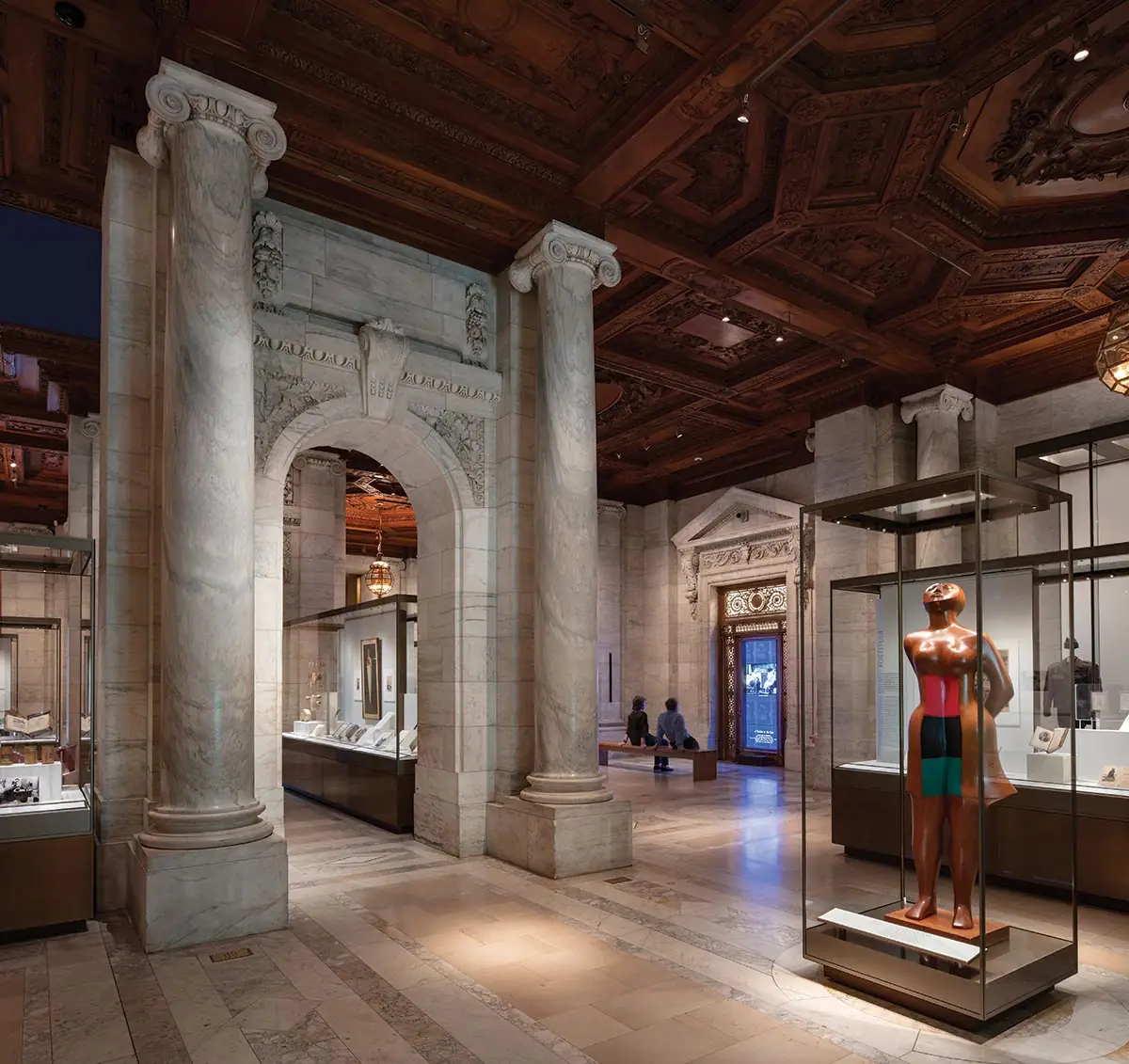
5
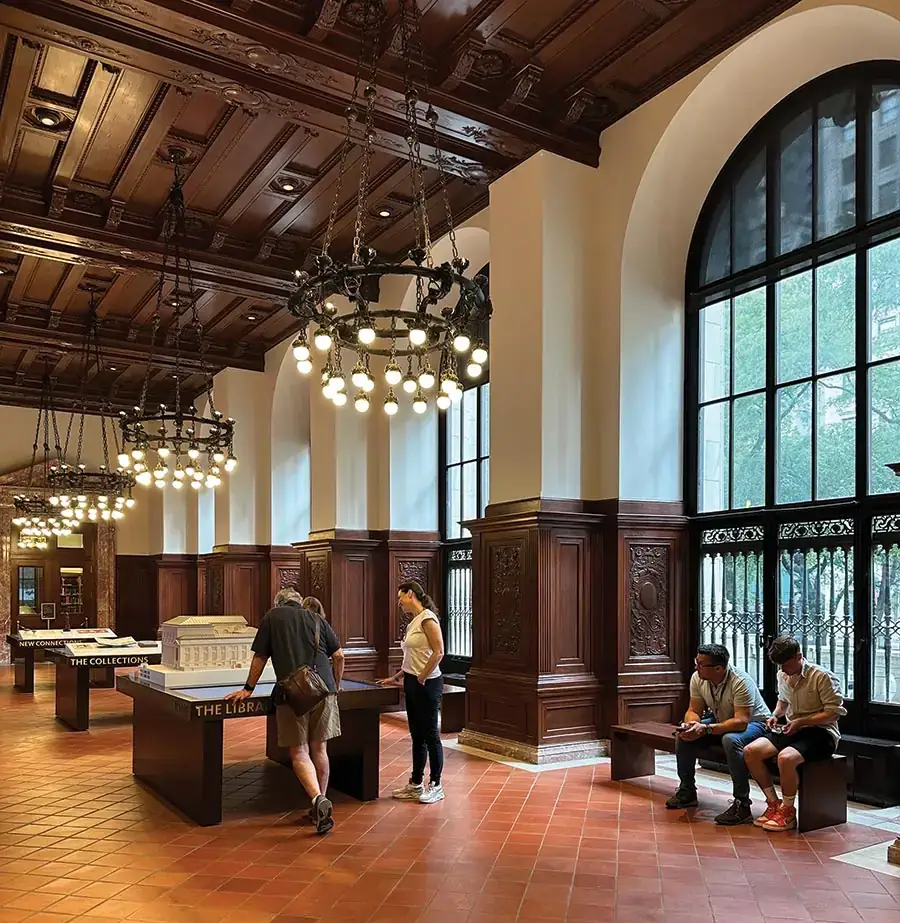
6
The main floor now accommodates the general public with a refurbished Gottesman Hall (5), a new Visitor Center (6), and an expanded library shop-cum-café (7). Photos © John Bartelstone (5 & 7), Mecanoo (6)
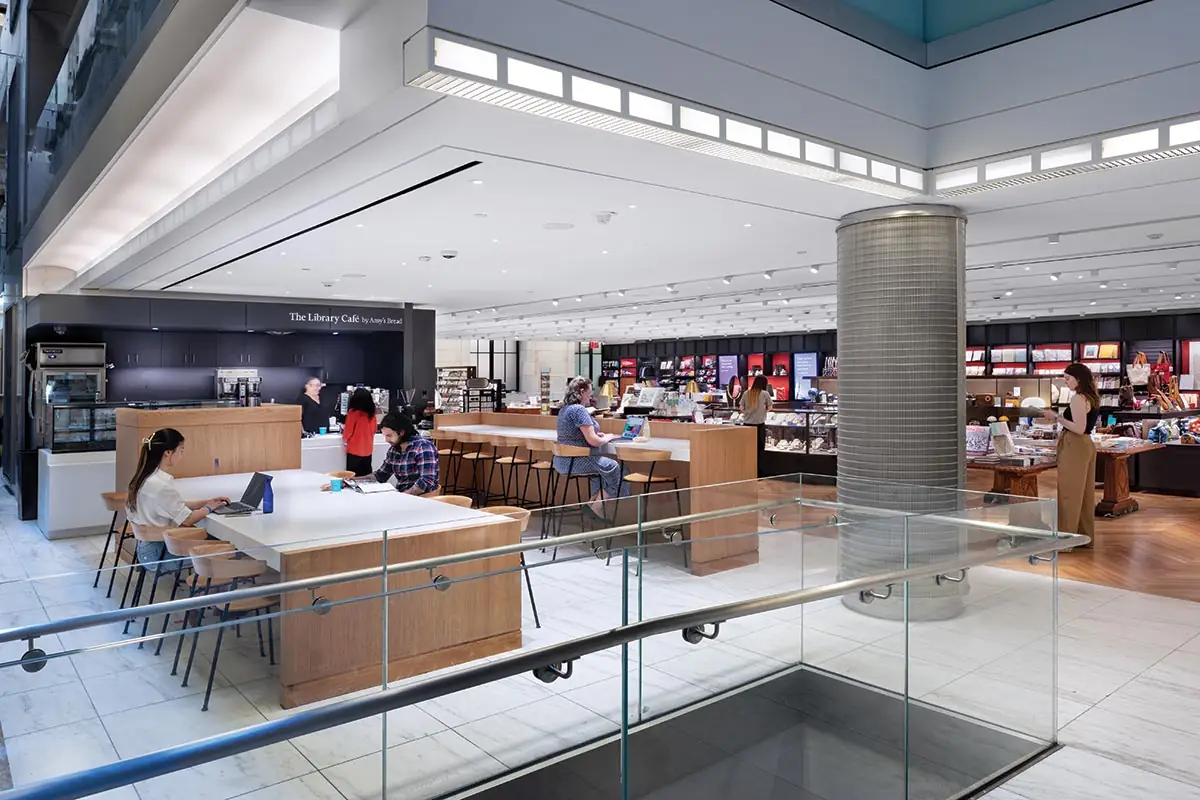
7
Once out-of-the-way rooms for study and seminars on the second floor are now modernized and refurbished, sheathed with cork flooring to minimize noise. Existing library furnishings maintain the interior’s extant character. “We did careful paint analysis, to assure the colors we selected were either the same as or inspired by what existed originally,” says Leber. “Everything we did refers to something that was in the building, but doesn’t pretend to be old.” Look and you shall find old card catalogues and tables used for display purposes in the shop.
“We really respected the building,” says Houben. “And while we didn’t bring it back to exactly the way it was, it feels coherent,” she adds. “People will think it has always been this way.”
This appears to be the end of renovations for a while. Of course, the remaining question for many is what happens to the now empty stack system under the Rose Main Reading Room—its 3 million books moved to the 1991 stack extension beneath Bryant Park, west of the library, and a warehouse in New Jersey. David Lem, NYPL’s vice president of Capital Planning & Construction, is ambiguously optimistic—but not explicit—about the future of that famous part of the library. For now, however, it is a closed book.
Click plans to enlarge
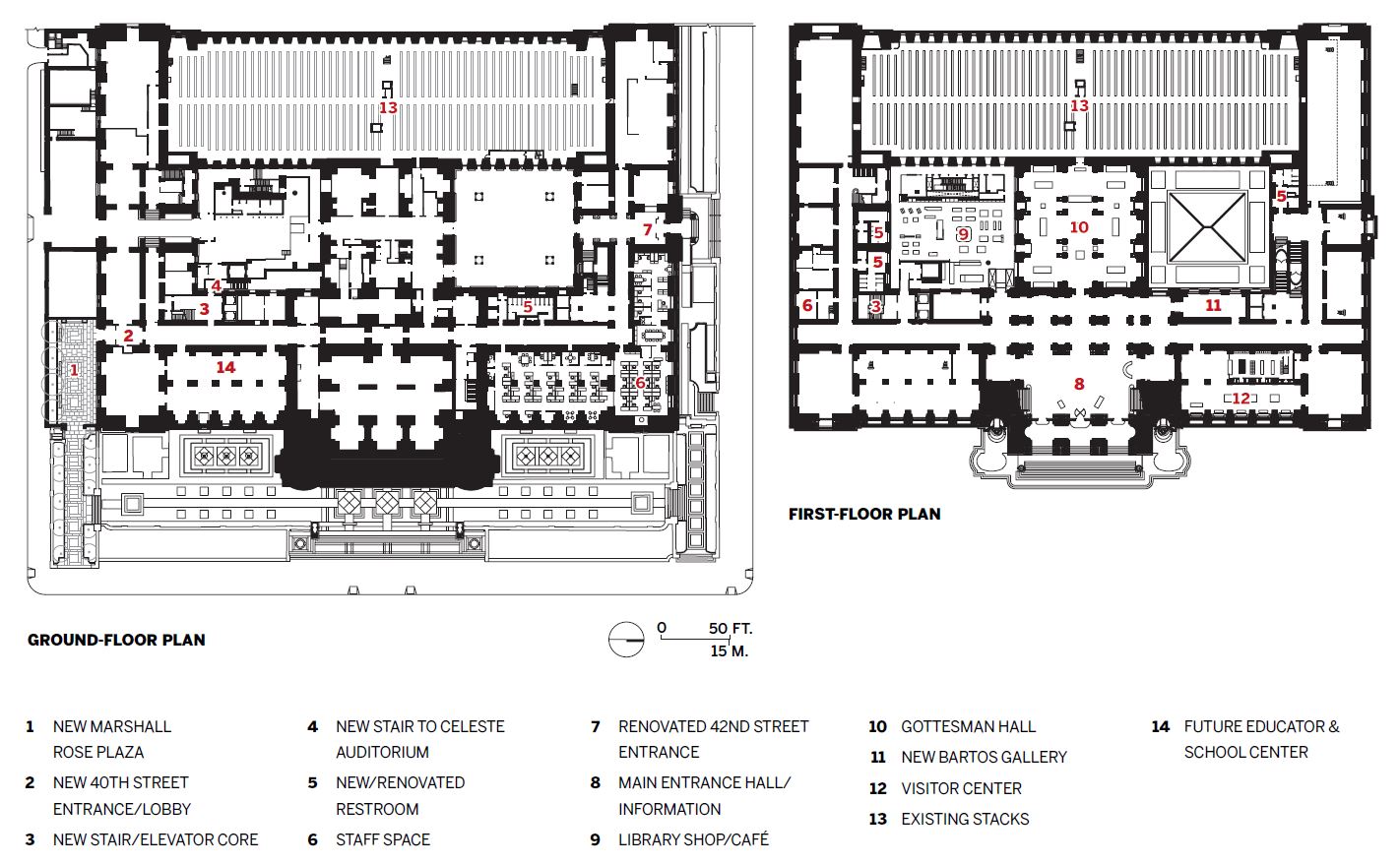
Click drawing to enlarge
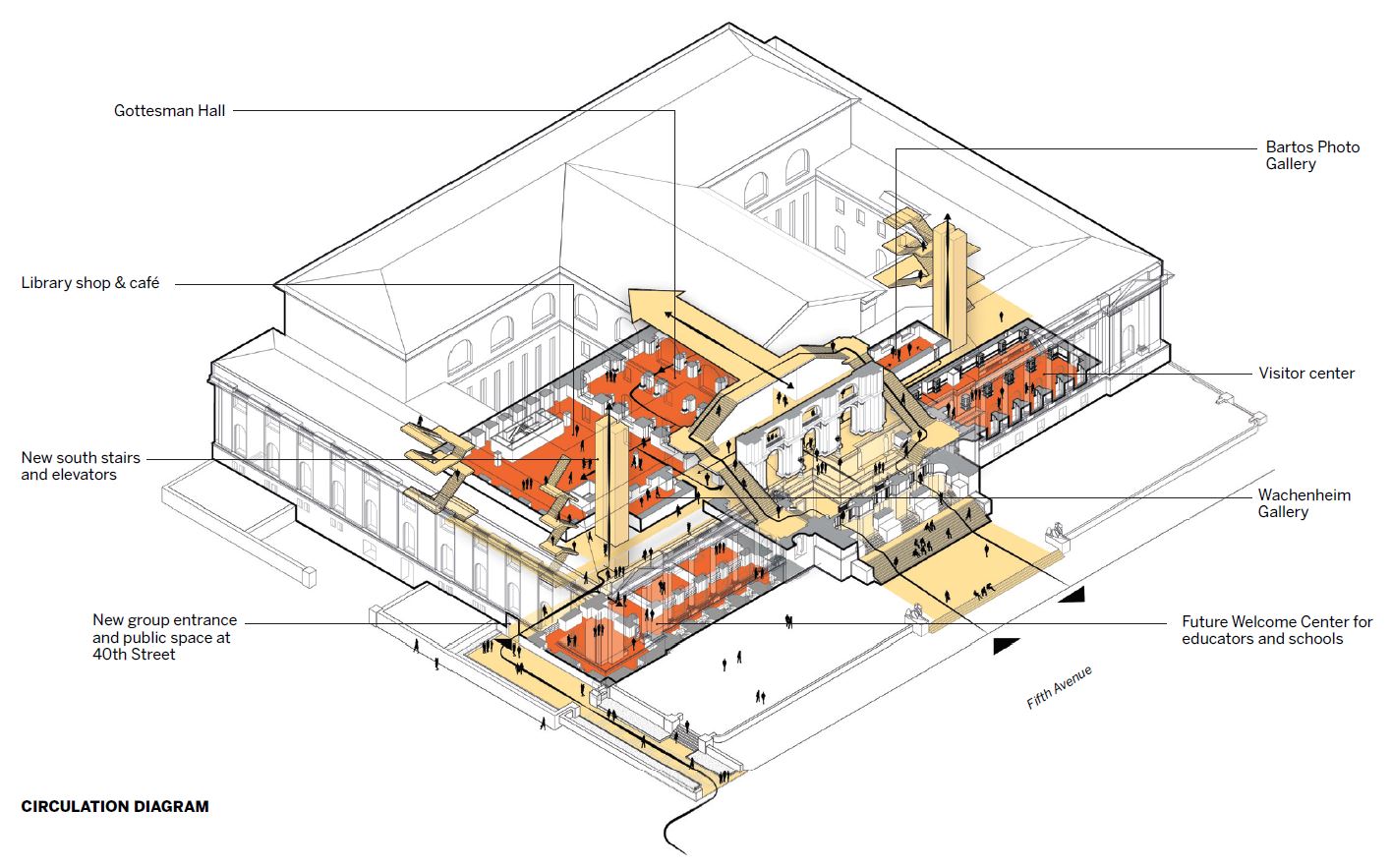
Credits
Design Architect:
Mecanoo — Francine Houben, partner in charge; Begoña Garcia Giner, Carmen Pereira, Jasper Tonk, Seger Bekkers, Ron van Logchem, Martijn Meester, Simone op den Kamp, design team
Preservation Architect:
Beyer Blinder Belle ¬– Elizabeth R. Leber, AIA, LEED AP (Partner-in-Charge), Stephen McHale, RIBA, LEED AP (Project Manager), Kerry Nolan, AIA (Project Architect), Elizabeth Kim, Samuel King, Emma Leonard, Michael Elizabeth Rozas, Mary George, Lars Moestue, Gladysa Vega, Assoc. AIA, Lauren Cawse, Lissette Mendez-Boyer, Brett Gaillard, Pooya Bakhsheshi, Kett Murphy, Denis D’Amberville, Laura Carrera, Bob Stern, Nick Kazmierski, Dimitra Gavrilaki, Kimyen Nguyen, Stacey Moye, Kate McHale, Steve McCarthy, Miriam Kelly, Kate Reggev, Susan Link, design team
Engineers:
Silman (structural); Kohler Ronan (m/e/p/fp/it); Langan (civil/geotechnical/surveyor)
Consultants:
OLIN (landscape architecture); Tillotson Design Associates (lighting design); Jaffe Holden (acoustics, a/v); CCI (code, accessibility); Van Deusen (vertical transportation); Pure + Applied (exhibition design); Lakeside Collaborative (retail); Architectural Openings (hardware)
General Contractors:
Turner Construction; Suffolk Construction
Client:
New York Public Library
Size:
250,000 square feet
Cost:
$169 million (total project); $130 million (construction)
Completion Date:
July 2023
Sources
Marble:
Vermont Quarries
Glazing:
Oldcastle BuildingEnvelope
Doors:
Milgo Bufkin, Curries, Masonite
Hardware:
Sargent, LCN, Rixon, VonDuprin, Tormax, Schlage
Acoustical Ceilings:
USG, Armstrong, BASWAPhon
Lighting:
Bega, Selux, Cree, DMF, Bartco, Lucifer, Interlux, Lutron
Terrazzo:
Terroxy
Paint:
Benjamin Moore



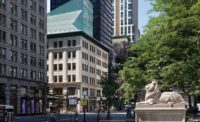
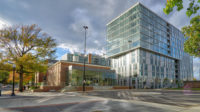
Post a comment to this article
Report Abusive Comment